- News
- Reviews
- Bikes
- Components
- Bar tape & grips
- Bottom brackets
- Brake & gear cables
- Brake & STI levers
- Brake pads & spares
- Brakes
- Cassettes & freewheels
- Chains
- Chainsets & chainrings
- Derailleurs - front
- Derailleurs - rear
- Forks
- Gear levers & shifters
- Groupsets
- Handlebars & extensions
- Headsets
- Hubs
- Inner tubes
- Pedals
- Quick releases & skewers
- Saddles
- Seatposts
- Stems
- Wheels
- Tyres
- Tubeless valves
- Accessories
- Accessories - misc
- Computer mounts
- Bags
- Bar ends
- Bike bags & cases
- Bottle cages
- Bottles
- Cameras
- Car racks
- Child seats
- Computers
- Glasses
- GPS units
- Helmets
- Lights - front
- Lights - rear
- Lights - sets
- Locks
- Mirrors
- Mudguards
- Racks
- Pumps & CO2 inflators
- Puncture kits
- Reflectives
- Smart watches
- Stands and racks
- Trailers
- Clothing
- Health, fitness and nutrition
- Tools and workshop
- Miscellaneous
- Buyers Guides
- Features
- Forum
- Recommends
- Podcast
news
Eurobike 2012: the fastest TT bikes from Specialized, Cervelo, Bianchi, Cannondale, Scott and loads more
This is our round-up of all the time trial bikes we could find in the whole of the Eurobike show last week - and we were on a mission to seek them out.
A few things to notice... Every TT bike we saw was carbon fibre, they all had internal cabling, and a cutaway/curved seat tube to manage the airflow at the back end of the bike has become universal. Of course, there's nothing new about this idea now, it has been around for years, but I don't think we saw a single TT bike in the whole place that didn't go for this feature in one form or another.
The biggest development over the last few years has been towards more integration. Hiding the brakes behind the fork and/or frame sections has become the norm rather than the exception. Plus, ever more manufacturers are designing the frame and fork to fit together virtually seamlessly, sometimes using an external steerer tube. Other brands have shortened the head tube so that the fork crown and stem fit inside the frame silhouette to minimise drag.
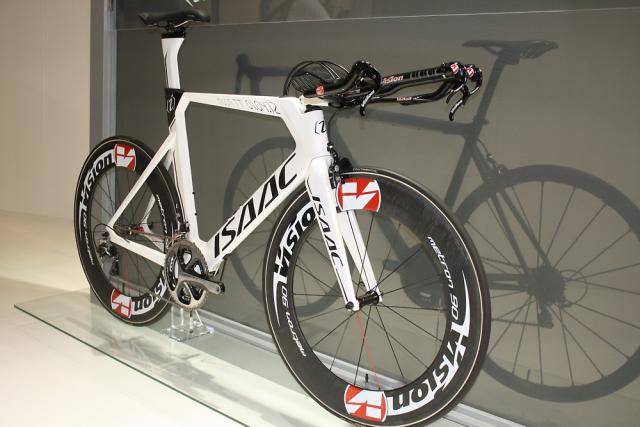
The Muon is the more expensive of Isaac’s two time trial bikes, costing around £4,480 (subject to confirmation). For that you get a 40 ton carbon aero-tubed frame with a Shimano Dura-Ace build.
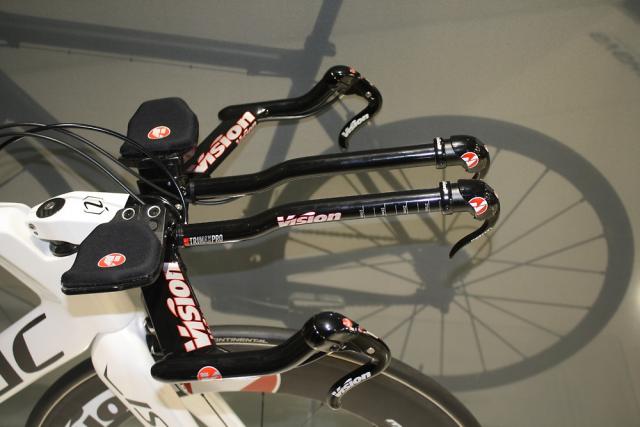
The shifters are Vision’s Metrons that use buttons on the ends of the aero bar extensions and brake-style levers for the gear changes.
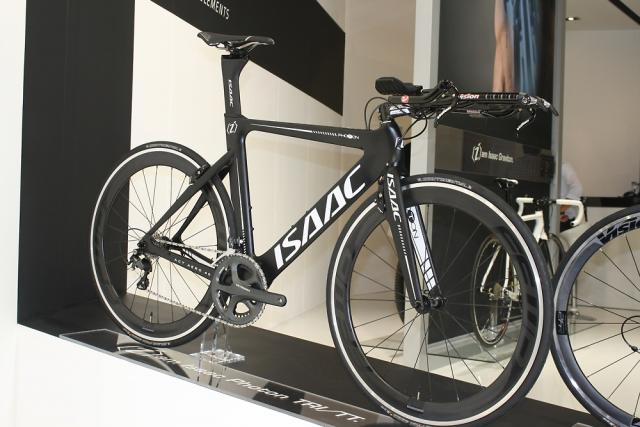
The other time trial bike in Isaac’s range is the brand new Photon with TRP direct pull brakes sheltered away from the airflow. The groupset is Shimano Ultegra and the complete bike costs about £3,480. As with the Muon, if you want to change any particular component you can use Isaac’s a la carte service and choose something else. The price will be adjusted accordingly.
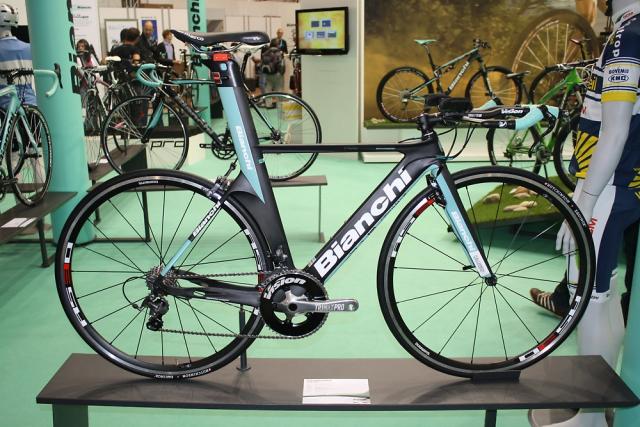
Bianchi’s Pico comes with an ultra-short head tube – you’re looking at just 100mm on the 57cm version – together with an integrated seatpost and a sheltered rear wheel. It’s another bike that uses TRP direct-mount brakes, the front one tucked in behind the fork crown. Those Shimano wheels aren’t the most aerodynamically advanced, though.
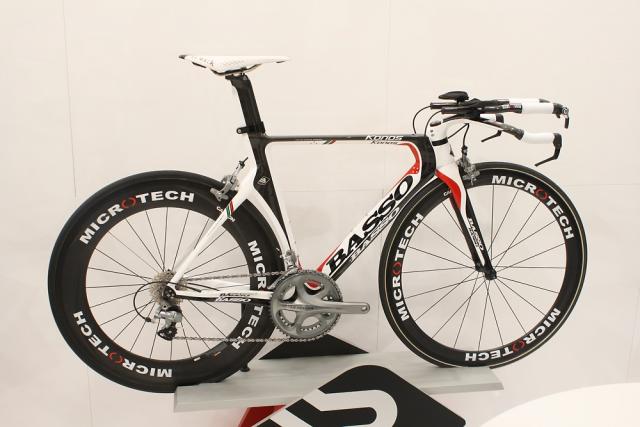
Basso have reduced the length of head tube so that the fork crown and stem both sit flush with the frame to reduce the frontal area. The cables run internally to reduce drag and the leading edge of the rear wheel tucks in closely behind the sculpted seat tube. Those Micro Tech wheels are Basso’s own, by the way.
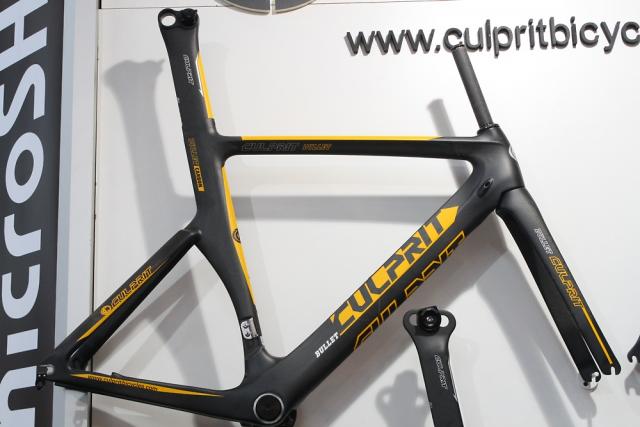
The Bullet from new Taiwanese brand Culprit comes with a two-position seatpost so you can alter the effective seat angle while rear-facing dropouts allow you to fine-tune the position of the rear wheel behind the seat tube. With Culprit you can choose the frame colour and finish, and even match up the colour of other components like the stem and chainset.
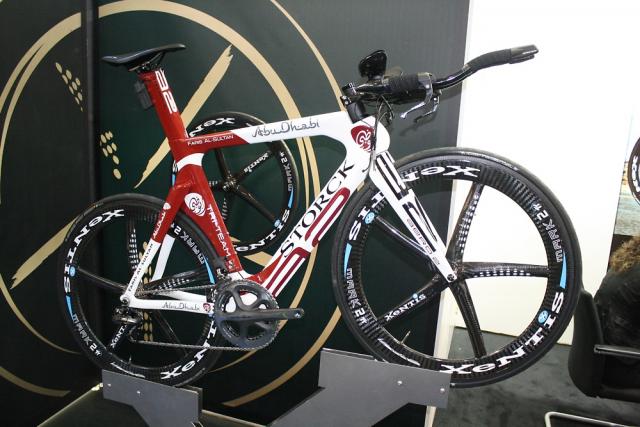
This is the Storck Aero 2 belonging to former Ironman world champion Faris Al-Sultan (there are pictures of the standard version in the gallery too) The seat tube angle is adjustable from 73° to 80° and, as you can see, the Shimano Di2 battery is mounted to the back of the seatpost.
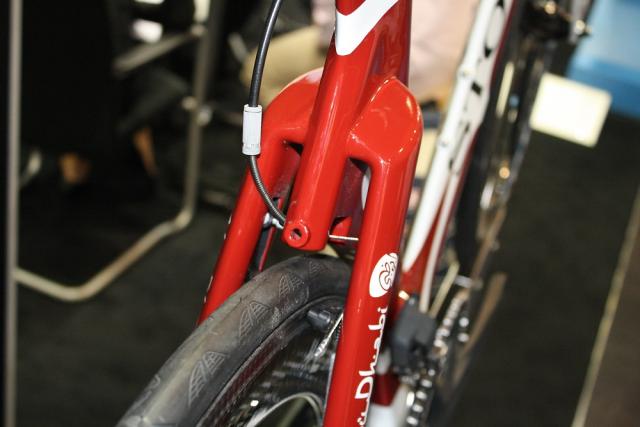
The front brakes is hidden within the fork crown – not just behind it, it sits inside – and the rear brake lives in recesses in the seatstays. It’s only the brake shoes/blocks that stick out into the air.

Cannondale’s new Slice RS Black Edition looks ridiculously fast. This is the bike that our man Dave saw at the Utah unveiling earlier in the year. The tube profiles are all designed for the best aerodynamics and rather than running the steerer through the head tube, Cannondale use an external steerer to keep everything as narrow as possible at the front end.

The stem and bars integrate neatly with the fork and the frame while the front mini V-brake is tucked in behind the fork. The rear one is hidden away behind the bottom bracket.
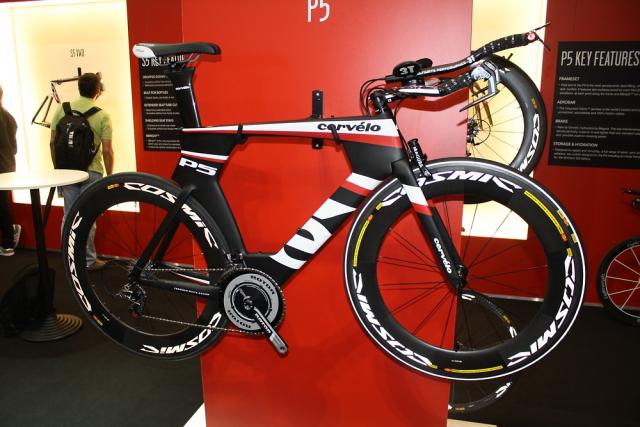
We’ve talked about the Cervélo P5 tons on Road.cc since the launch back at the start of the year. It comes in two versions one for triathlon with what is essentially a fairing over the front brake, and this UCI-legal version.
Check out the depth of the frame sections around the head tube and the seat tube/top tube junction. And also notice the position of the dropped down tube relative to the front wheel; the idea is to manage the airflow coming off the wheel for the minimum amount of drag.
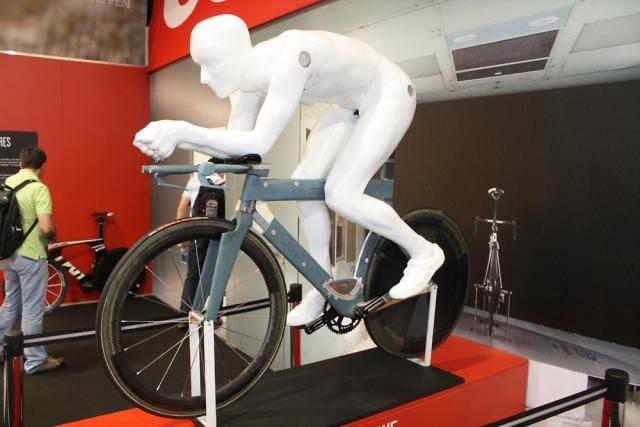
This fella is Cervélo’s foam Dave Zabriskie who’s sitting aboard their mule bike. The designers can adapt that bike quickly at the wind tunnel to try our different designs. Although Cervélo design everything on computer using CFD (computational fluid dynamics) these days, it’s all verified in the wind tunnel and that costs a lot of money so they need to be able to work quickly.
Foam Dave is their wind tunnel rider. It’s one thing to make a bike that’s aerodynamically efficient when no one’s on board, but bikes don’t ride themselves so it’s important to see how the air behaves when there’s someone in the saddle.
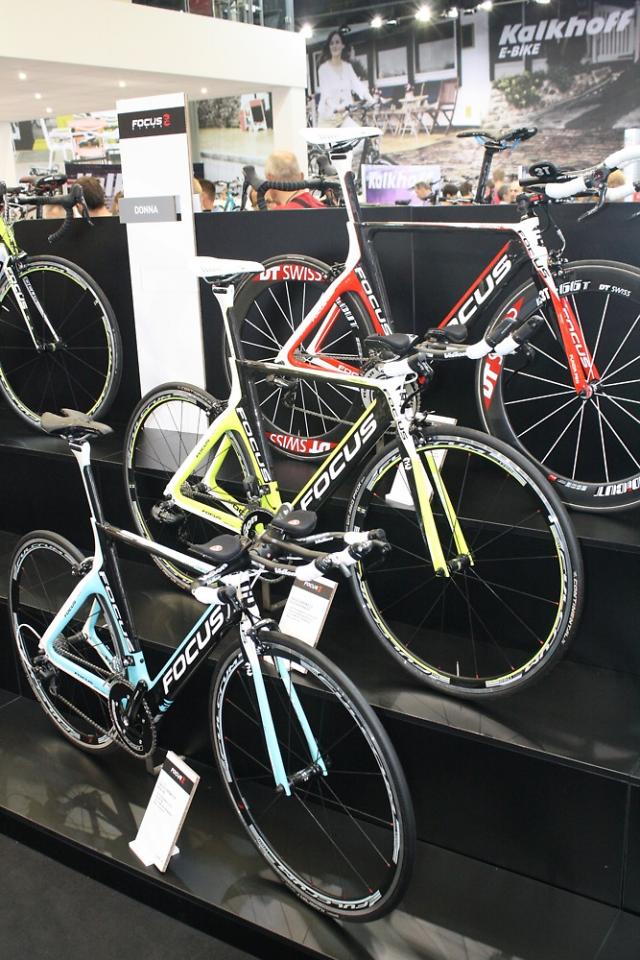
Focus have three time trial/triathlon bikes: the Izalco Chrono 1.0 (top), the Izalco Chrono 2.0 (middle) and – you’ll never guess – the Izalco Chrono 3.0 (bottom). The 3.0 is the most affordable version, coming with a Shimano 105 groupset and a Vision cockpit.
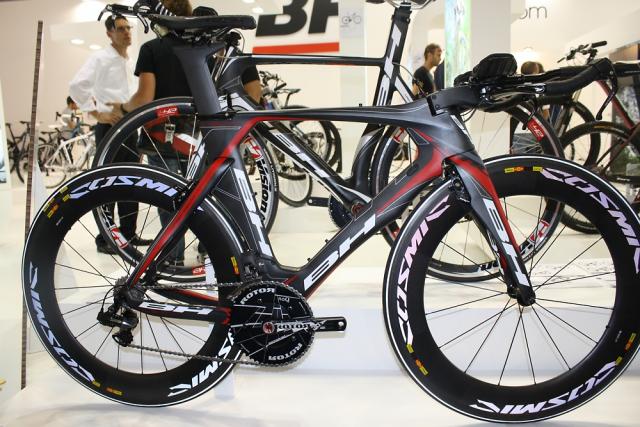
The new BH Aerolight looks like a serious piece of work. It’s another of those bikes with the stem and fork crown recessed into the head tube and seatstays that are widely spaced around the rear wheel to manage the airflow back there.
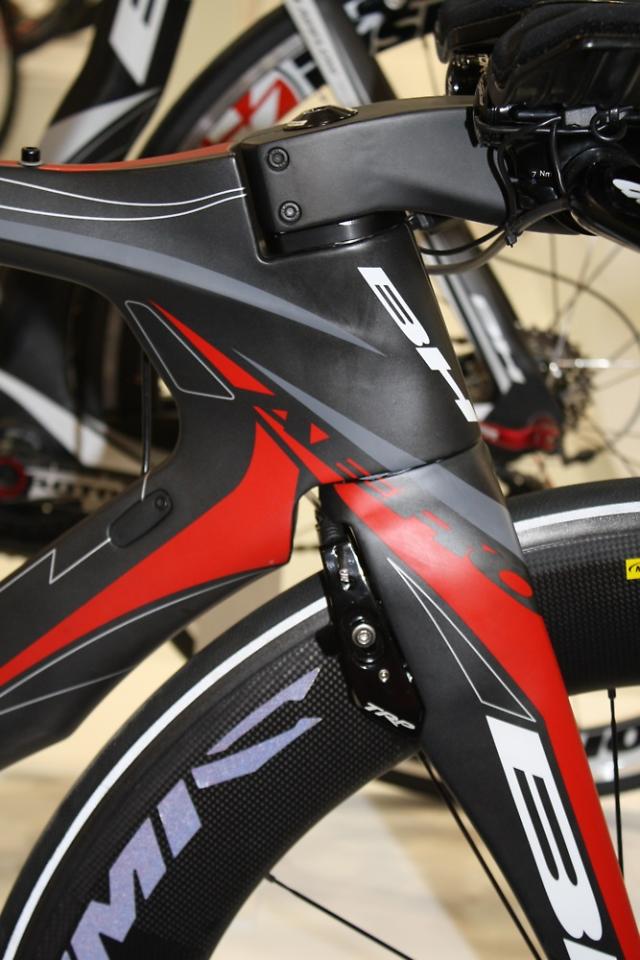
BH have put bolt bosses on the top tube, which is something Cervélo do too, so you can mount storage options up there. As you can see, this version comes with a V-brake although there’s an attachment point for centre-mount brakes too.
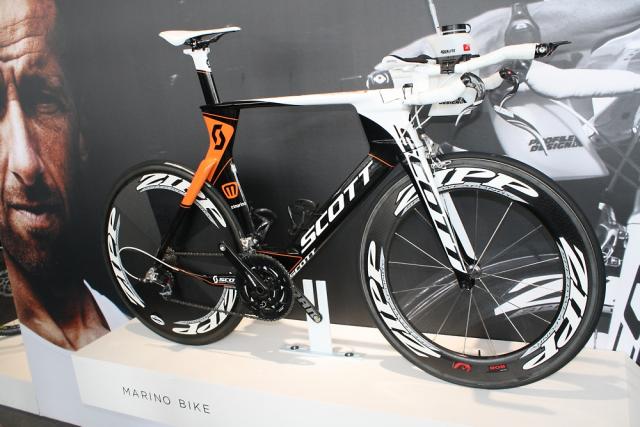
This is the Scott Plasma belonging to Ironman world record holder Marino Vanhoenacker. Unusually for a top-end TT bike, Scott leave the front brake out at the front of the fork crown although everything else is highly integrated, the stem leading almost seamlessly into the top tube and the rear brake sitting behind the bottom bracket.

Felt offer a whole range of TT/triathlon bikes including the B12 which has been redesigned for 2013 to incorporate elements from their DA models. That’s a UHC Performance carbon-fibre frame and fork with internal cable routing. The groupset is a mixture of Shimano Ultegra and components from Vision. It looks good value at £2,099.
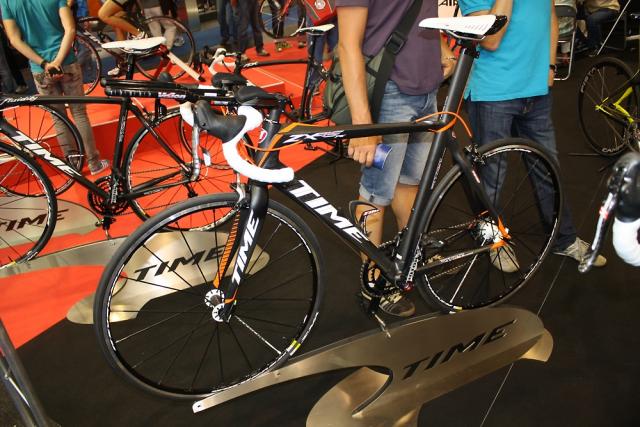
Time’s ZXRS Tri is a version of their ZXRS aero road bike adapted for triathlon. You get a set forward topper on the integrated seat tube to steepen up the seat angle and Vision bar extensions mounted to the drop handlebar. It’s not the most triathlon-specific of tri bikes but it’s an interesting option, especially if you want one do-it-all bike.
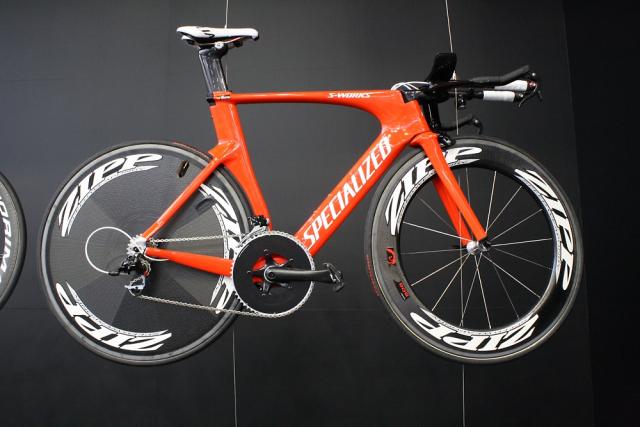
This is the Specialized S-Works Shiv belonging to TT ace Tony Martin, with an integrated cockpit, skinny head tube (1in to 1 1/8in) and airfoil tubing. Guess how big that chainring is. It’s a 58T.

BMC’s Time Machine TM01 is a bike that looks like it means business. It incorporates truncated aerodynamic tubes and BMC’s Tripwire technology. This involves shaping that’s designed to create a small amount of turbulence next to the frame which forms what BMC call “a sort of air cushion” to improve the performance.
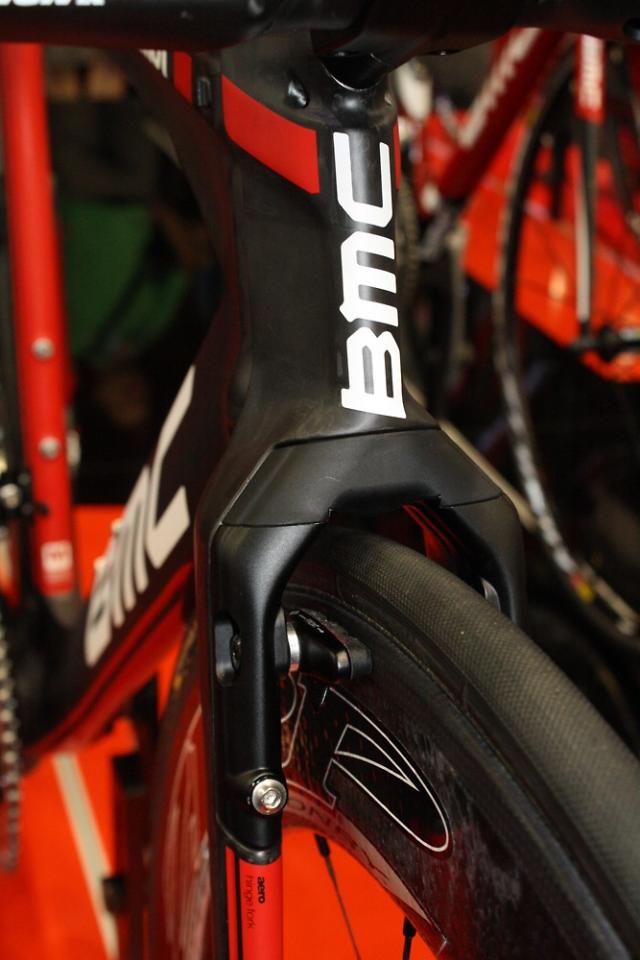
The front brake design deserves a closer look... so here it is. It's cleverly incorporated into the fork crown.

Pinarello’s stand at Eurobike was completely yellow in recognition of Wiggo’s Tour de France win. The Graal time trial bike remains unchanged for 2013 except for new colour options that incorporate a lot of that yellow.
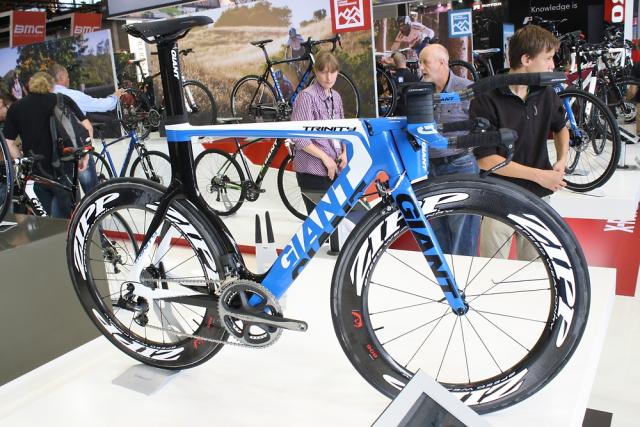
Giant’s Trinity bikes still look modern with aero tube profiles, hidden brakes and, on this Advanced SL 0 model, an integrated front end. It comes with a Shimano Dura-Ace Di2 groupset and Zipp 808s – a dream assembly. It’s not UCI legal in this configuration although an optional conversion kit is available.
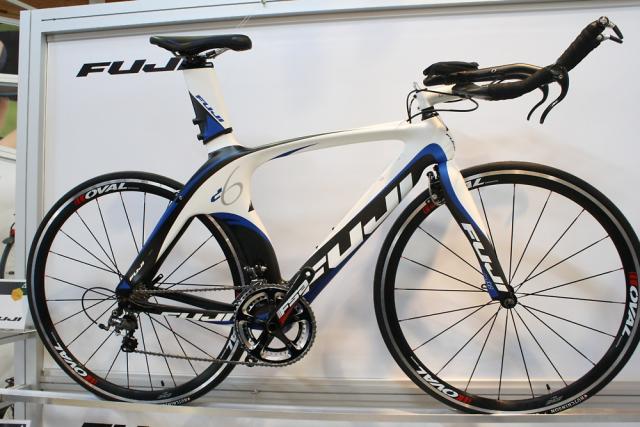
Fuji don’t have a particularly high profile in the UK although they do have a whole range of TT/triathlon bikes if you can track them down. This is the D6 1.3 which comes with their C5 carbon frame, a carbon fork and a Shimano Ultegra group.
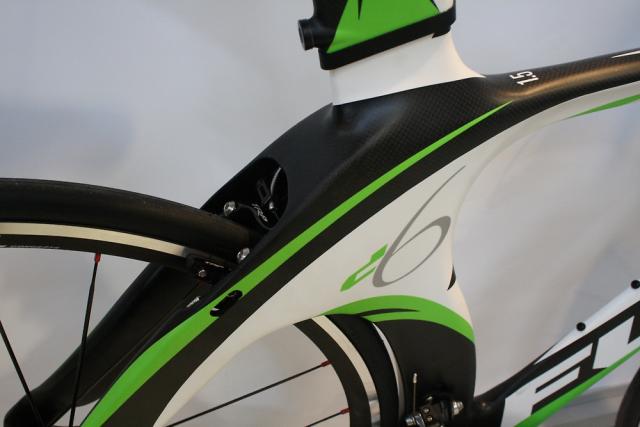
Check out how they hide the brakes within the chassis for the maximum erodynamic benefit.

The curved seat tube means there’s just one set of water bottle mounts in the front triangle so they’ve stuck another set on the back of the seatpost.
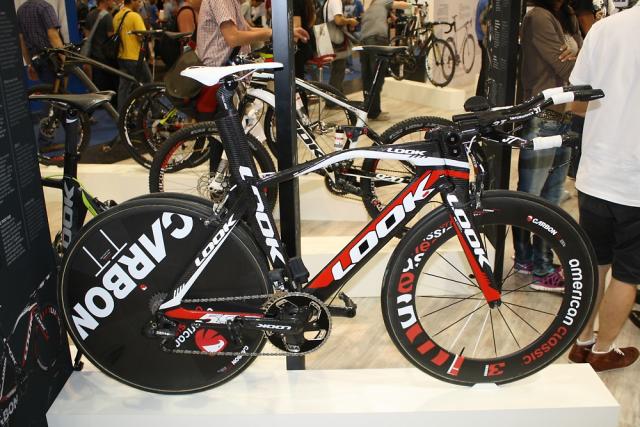
Look’s 596 is certainly distinctive with that dogleg in the top tube...
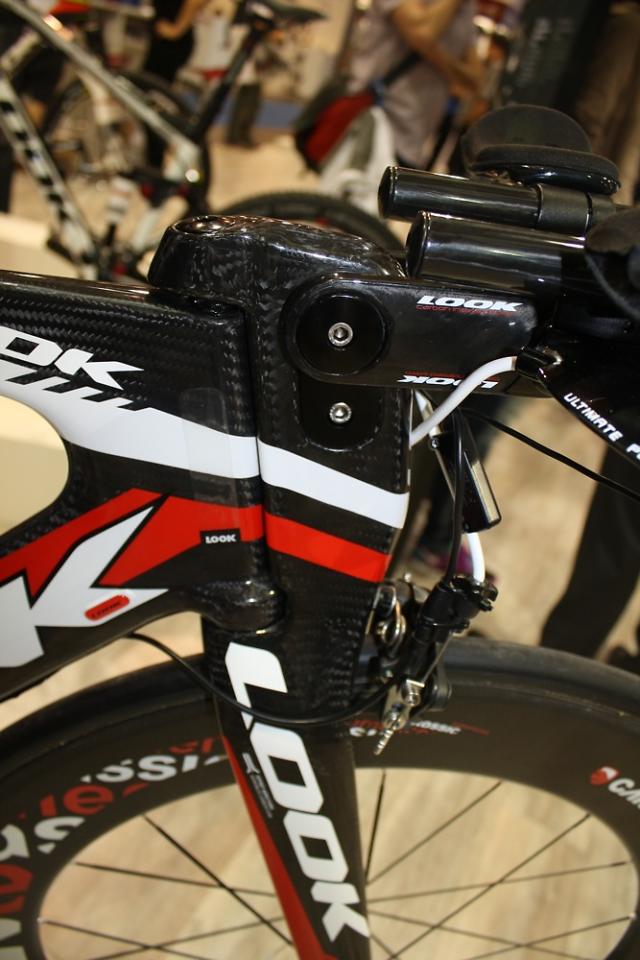
...and the indexed carbon-armed stem.

Look use their own Zed 2 carbon chainset here too.
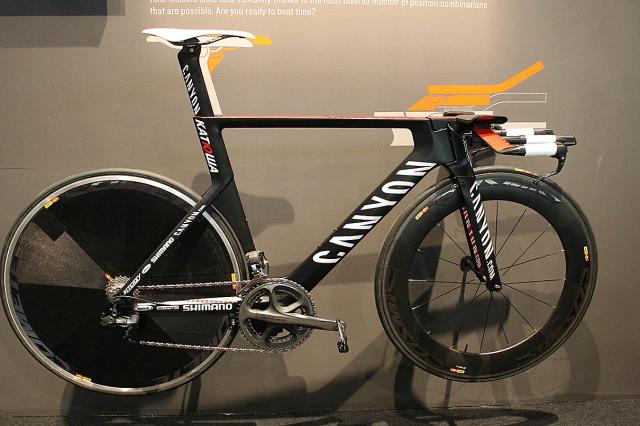
In terms of integration, Canyon’s new Speedmax CF Evo is hard to beat. This is the Team Katusha bike. Check out the front end; the stem sits flush with the top tube, the arm rests are barely any higher, the fork comes with an external steerer and melds beautifully into the frame… the designers have worked hard on this one.
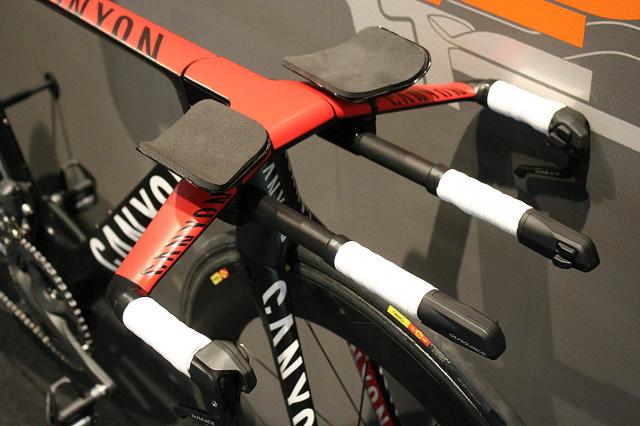
We’ve already written in detail about the design of this bike so check out that story for the full SP. It’s Di2 only, by the way. With shifters at the ends of the base bar as well as at the end of the aero extensions, you can shift whether you’re standing on the pedals or seated.
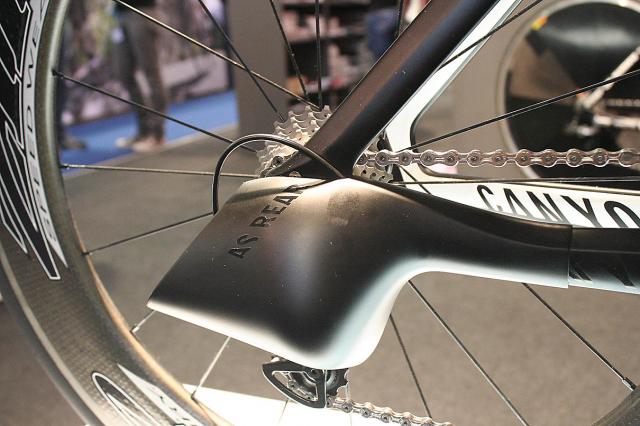
Oh, and those aero shields over the mechs are interesting. Mechs aren’t designed with aerodynamics in mind so Canyon have simply covered them up to reduce drag (they're not going to be UCI legal with a design like that).
Mat has been in cycling media since 1996, on titles including BikeRadar, Total Bike, Total Mountain Bike, What Mountain Bike and Mountain Biking UK, and he has been editor of 220 Triathlon and Cycling Plus. Mat has been road.cc technical editor for over a decade, testing bikes, fettling the latest kit, and trying out the most up-to-the-minute clothing. He has won his category in Ironman UK 70.3 and finished on the podium in both marathons he has run. Mat is a Cambridge graduate who did a post-grad in magazine journalism, and he is a winner of the Cycling Media Award for Specialist Online Writer. Now over 50, he's riding road and gravel bikes most days for fun and fitness rather than training for competitions.
Latest Comments
- ROOTminus1 1 sec ago
I'm glad the article went into more detail and cleared things up, the headline had me worried that some autonomous building had run rampant and...
- mark1a 18 min 32 sec ago
Still here, just showing a few signs of wear and tear. Hopefully still serviceable for some years to come.
- Secret_squirrel 48 min 24 sec ago
Has he fully recovered though, and will he ever?...
- Rendel Harris 1 hour 3 min ago
How can you know that you are "equally fearful" as "any female cyclist"? There is no possible way of quantifying such emotions and female cyclists...
- chrisonabike 1 hour 35 min ago
I think it would be fairer to blame the moon - as in "my client is a loony".
- Bungle_52 1 hour 58 min ago
Nice idea but Gloucestershire Constabulary are not interested as exemplified by this prvious NMOTD. Not only was there NFA for the close pass in...
- hawkinspeter 3 hours 30 min ago
I think black boxes are great for early detection of cognitive decline and/or sight problems. Someone's driving is going to become much less smooth...
- Bigtwin 4 hours 5 min ago
It's a fashion. https://guildford-dragon.com/shalford-driver-who-smashed-shalford-war-me...
- MTL Biker 4 hours 26 min ago
Robin Phans .....


























































































































Add new comment
11 comments
Perhaps a silly beginner question, but on a time trial bike why bother with both a front and rear brake for really flat and/or straight courses? They seem to spend a lot of time faffing around trying to hide them to be more aero, so why not just take one of them off completely. Is it a UCI rule or some other reason? If it is UCI requirement, what's to stop a single brake being used on a TT bike for triathlon?
@randle2 ...
Controlability is one reason, added to the fact that all these bikes to be saleable have to be road-legal and both the CE safety standards and good ol' BS6102:2 require two independent braking systems.
Having just one brake might prove interesting if (rare though it is) a brake cable failed. Could be nasty if a mechanic failed to properly tighten a cable pinch bolt, or a mounting bolt, too.
The bikes have to retain the possibility of being sold so as not to fall foul of the UCIs regualtions with regard to commercial availability of products used by teams - and Triathlon bicycles have to be road legal to satisfy the Triathlon fraternity's rules, I think (must check that though, I may be wrong)...
We've just added in Argon 18's E118, the Ceepo Katana, and Olmo Kronos - interesting the way the bottom of the headtube has a pointy lip - be interested to know how that adds any aero advantage?
Looks are a very subjective thing, I think the Canyon is very good looking - totally pared down compared to some of them… the Look isn't a looker though.
I think I said it last year to, but that Canyon looks like a total speed weapon. Awesome.
Awesome but ugly. All of them.
Still, it's not really about looks (I hope)
ohhh porn love it lol
Any sign of updates to the Trek Speed Concepts?
Nope, Trek weren't at Eurobike, they had their own dealer show in Frankfurt a few weeks ago.
We've reviewed the 9.9 and the 2.5 previously, though.
Cheers Mat
Fair point, Trev. We're whacking them in right now.
Canyon?